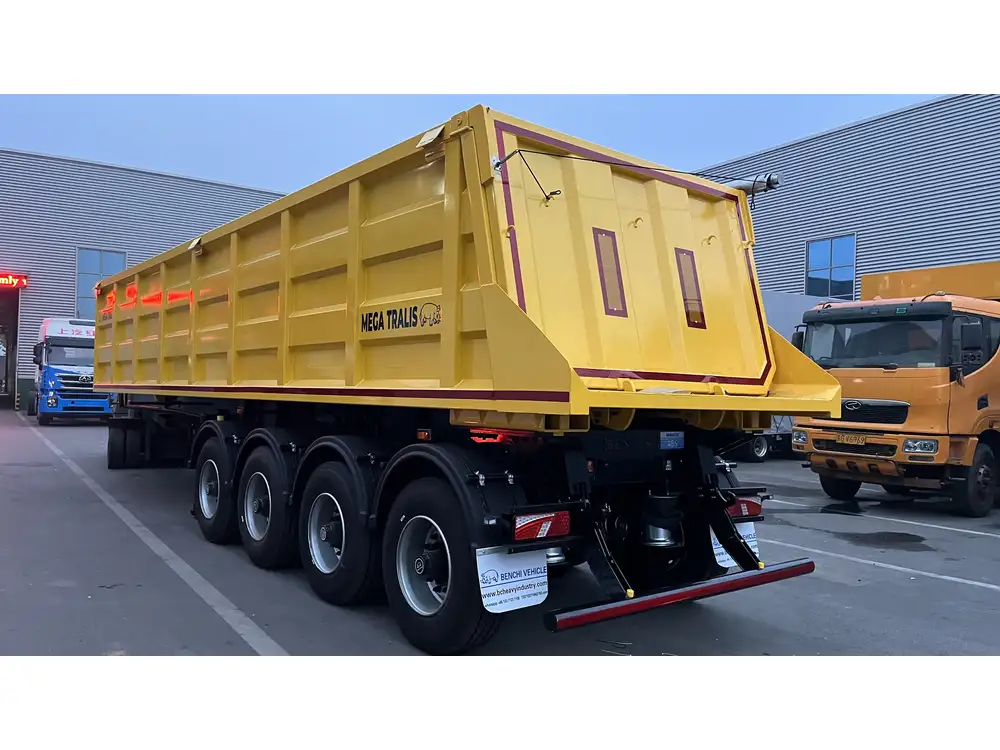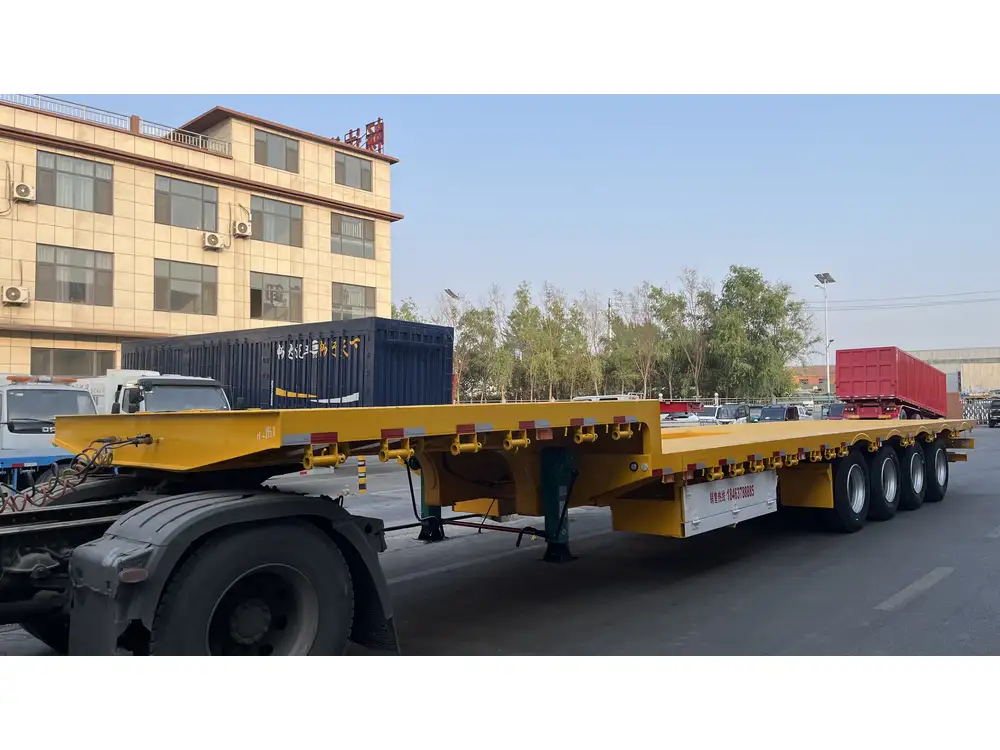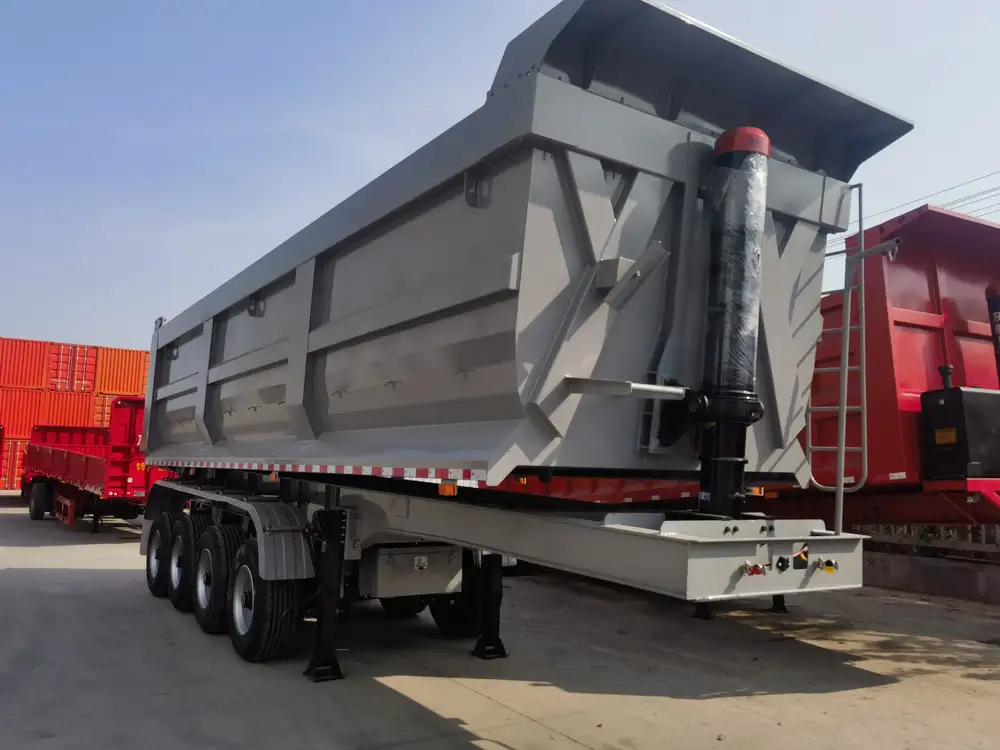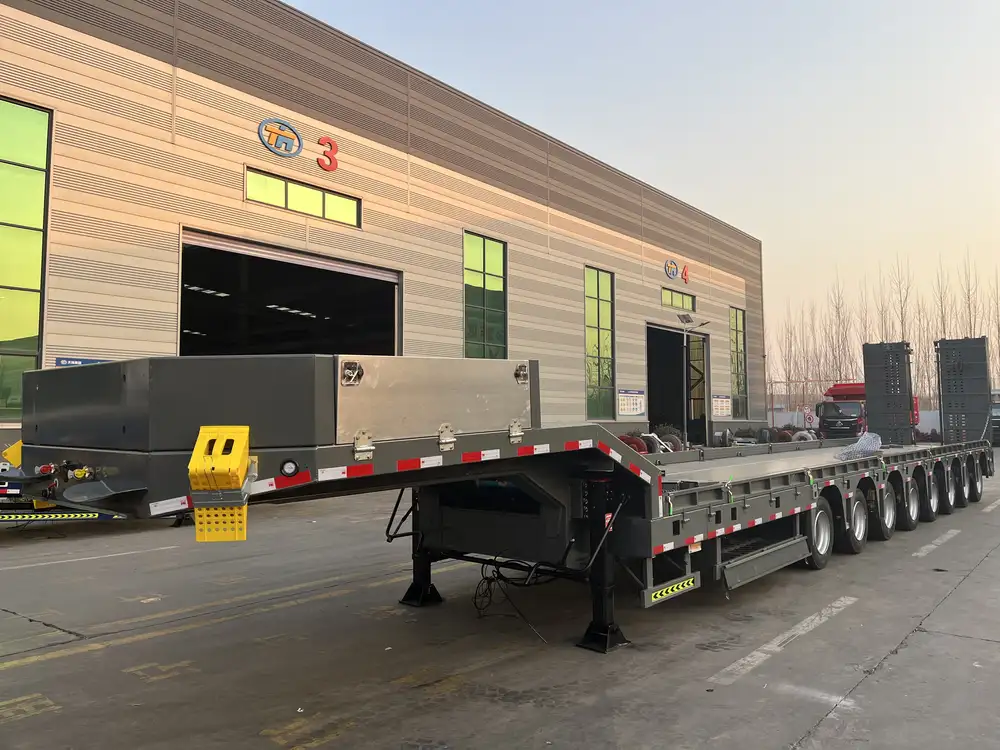When navigating the world of freight transport and logistics, understanding the various types of semi-trailers and their specifications is crucial. One of the most frequently asked questions is, how long is a flatbed semi-trailer? This article delves deeply into the dimensions, classifications, and practical implications of flatbed semi-trailers, providing a comprehensive overview for operators, buyers, and industry enthusiasts alike.
What is a Flatbed Semi-Trailer?
A flatbed semi-trailer is a type of trailer without sides or a roof, designed primarily for transporting heavy equipment and large, cumbersome loads that don’t fit traditional enclosed trailers. These trailers are frequently utilized in industries such as construction, agriculture, and manufacturing, allowing for straightforward loading and unloading due to their open design.
Standard Length of Flatbed Semi-Trailers
Flatbed semi-trailers come in various lengths, generally ranging from 48 to 53 feet. However, other sizes are available depending on specific needs and regulations. Below are the standard lengths and their specific uses:
| Length (feet) | Common Use |
|---|---|
| 48 | Preferable for lighter loads or regional transport. |
| 53 | Most common for general freight; ideal for larger loads. |
| 40 | Often used for specific equipment or in industries needing smaller dimensions. |

Considerations on Length
The length of a flatbed semi-trailer directly impacts its load capacity and maneuverability. Transport companies often select trailer lengths based on:
- Regulatory Compliance: Some states impose restrictions on trailer lengths, necessitating specific dimensions to avoid fines or complications.
- Load Type: Length must accommodate the size and shape of the load — longer items like pipes or lumber may require extra space.
- Weight Distribution: The overall weight capacity and distribution can influence choice. Longer trailers may enable better load distribution, vital for maintaining traffic safety.
Width and Height Specifications
While length is a primary concern, width and height are equally instrumental in trailer selection. The standard flatbed width is typically 8.5 feet, with a height ranging from 4.5 to 5.5 feet, depending on the design.
| Dimension | Standard Measurement |
|---|---|
| Width | 8.5 feet |
| Height | 4.5 to 5.5 feet |
Key Benefits of Flatbed Dimensions
The broad dimensions of flatbed trailers offer numerous advantages:
- Versatility: The spacious design allows the transportation of varied freight, from large machinery to oversized crates.
- Accessibility: A flatbed provides easy access for loading and unloading from all sides, enhancing efficiency in logistics.

Types of Flatbed Trailers
Understanding the different types of flatbed trailers is crucial for specific transport needs. Below are popular types, along with their applications:
1. Standard Flatbed Trailers
These are the most common flatbeds, used for general freight transport. They can carry anything from pallets of goods to construction materials.
2. Step Deck Trailers
Also known as “drop deck” trailers, these structures offer a lower deck height, making it easier to load taller items while still maintaining the same overall height restrictions for transport.

3. Double Drop Trailers
These trailers feature two lower sections, providing even more height clearance for oversized loads. They’re often used for heavy machinery, such as bulldozers or cranes.
4. Lowboy Trailers
Lowboys are specialized trailers designed for transporting heavy equipment with significant height, boasting a lower deck height for easy loading.
5. Extendable Trailers
These trailers can be adjusted to accommodate varying load lengths, making them ideal for diverse freight types—including oversized items.

Legal Regulations Impacting Flatbed Trailer Length
When considering flatbed semi-trailer dimensions, it’s essential to be aware of the legal restrictions that apply in your region. Each state and country imposes specific regulations regarding semi-trailer dimensions:
- Federal Regulations: The Federal Highway Administration establishes maximum length standards that most states adhere to, typically limiting the overall length to 53 feet for trailer combinations.
- State Variance: Some states allow longer trailers under specific circumstances or with special permits, enabling the transportation of oversized loads.
Charting the legal landscape ensures that carriers operate within the law, avoiding costly penalties and delays.
| Regulatory Aspect | Maximum Length (feet) |
|---|---|
| Federal Standard | 53 |
| States with Permits | Up to 70 or larger |
Load Capacity and Weight Distribution
The load capacity of a flatbed semi-trailer is governed by length, width, and design, influencing overall efficiency and cost.
Key Factors in Load Capacity
- Material of Construction: Steel, aluminum, or composite materials can affect weight limits.
- Axle Configuration: More axles generally lead to higher weight capacity.
- Distribution of Load: Ensuring the load is evenly distributed helps comply with regulations and ensures safety during transport.

Calculating Load Weight and Distribution
To maintain a safe and legal transport setup, it’s crucial to calculate weight distribution accurately.
- Know the Gross Vehicle Weight Rating (GVWR): Understand the maximum weight your trailer can safely carry.
- Distribute Weight Evenly Across the Axles:
- Aim for a 60/40 split between the trailer’s front and rear axles.
- Load heavy items towards the front to enhance stability.
Tools for Weight Calculation
Using weight scales, mobile apps, and third-party services can ensure proper weight compliance and safety.
The Practical Impact of Length on Maneuverability
Length significantly influences how a flatbed trailer maneuvers in different environments. Larger trailers may struggle in tight spaces or urban areas, while shorter models provide flexibility.

Factors to Consider
- Urban Transport: Shorter trailers are ideal for city deliveries due to tighter roadways and lower maneuverability.
- Highway Use: Longer trailers offer the advantage of transporting more freight, increasing profit margins for businesses.
Maintenance and Care of Flatbed Trailers
Proper maintenance of flatbed trailers can extend their lifespan and ensure safe operation on the road.
Routine Maintenance Checklist
| Maintenance Task | Frequency |
|---|---|
| Inspect brakes and tires | Weekly |
| Check for structural damage | Monthly |
| Perform a comprehensive clean-up | Seasonal |
| Lubricate moving parts (hinges, etc.) | Monthly |
Regular inspections help prevent roadside emergencies and costly repairs, ultimately contributing to operational efficiency.

Conclusion
In conclusion, understanding how long a flatbed semi-trailer can be is essential for anyone involved in freight transport. The choice of trailer length should be informed by regulatory standards, load requirements, and destination challenges. By factoring in width, height, load capacity, and weight distribution, operators can ensure compliance while maximizing efficiency.
Investing in a trailer that meets industry standards and your specific needs will pave the way for a smoother, more efficient transportation process. Whether you’re new to the industry or a seasoned operator, understanding the specifics can aid in making informed decisions that enhance utility and profitability.



